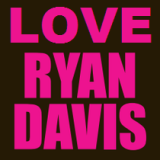Microsoft offered us a shitty deal
By lebkin 5 Comments
Microsoft's original Xbox One policies were compared regularly to other online DRM: Steam, Kindle, Apple App store, Netflix, Amazon. I wanted to talk about those services and how the DRM deal they offer is different than Microsoft's.
iPad and Apple
iPad apps have DRM, but once on my iPad they will theoretically stay functional as long as the device does. They never need to phone home. They work without internet. Apple could blow-up tomorrow and those would still work.
iPad apps are also not tied to a specific hardware. iPad 1 games work on modern iPads. All past software are support on new software/hardware. Because of this, it is in Apple's best interest to continue giving me access to the older software - it earns both my goodwill and allows them to sell me more stuff.
The day after Microsoft stopped running the Xbox One's servers, its DRM would have made everything I purchased fail. It doesn't matter which system I use it on - my primary or a secondary - without verification, the games go away.
Microsoft also has shown a dismissive attitude toward backwards compatibility. The 360 poorly supported some old games; the One doesn't support them at all. Based in that policy, there is little incentive to keep servers up long-term. EA already turns off old multiplayer servers - I do not trust Microsoft to continue supporting Xbox One games on old hardware, long after it's ceases to make them money.
This is a similar deal offered with Steam or Kindle books.
Netflix
Netflix is an all digital service that goes away as soon as either your internet fails or Netflix closes. On the surface, it appears similar to Xbox One. The key difference is tied to cost and hardware. I can pay $7.99 a month and get access to everything Netflix has to offer. It doesn't matter how many or how few months I've paid into the system. It's a flat exchange: $8 gets you everything. An exchange we renegotiate every month, but it's clear.
With the Xbox One, the exchange is both more costly and less clear. You pay $60 per game, that will last for some unforeseeable distance into the future. Consoles are good future investments - your NES carts still work in your NES system. We used to only have to trust our hardware - if you keep your 360 work and the discs in good shape, they will last a long time. The Xbox One requires us to trust Microsoft will keep those servers going. It's easy to say today that this will likely happen for a long time. But we'd have said the same thing about SEGA only a few generations ago.
Also, as with the Apple example above, Netflix isn't tied to a single piece of hardware. Thus making it more likely to outlive this generation of consoles than Microsoft's support for Xbox One.
Summary
Microsoft offered us a deal that is one of the worst in recent history toward DRM. With other options available, it was easy to pass on that bad deal and go with those who had better terms.

 Certainly, some games near the line between tool and art, but those are the games where the player does little more than watch what happens. Your input is not appreciated, except to push the button to cause the next art bit to pop up. Cutscenes are movies that interrupt the game; you put down your controller and watch. Why else are quicktime events so annoying than because you are busy experiencing the art and not expecting to have to play a game?
Certainly, some games near the line between tool and art, but those are the games where the player does little more than watch what happens. Your input is not appreciated, except to push the button to cause the next art bit to pop up. Cutscenes are movies that interrupt the game; you put down your controller and watch. Why else are quicktime events so annoying than because you are busy experiencing the art and not expecting to have to play a game?
Log in to comment